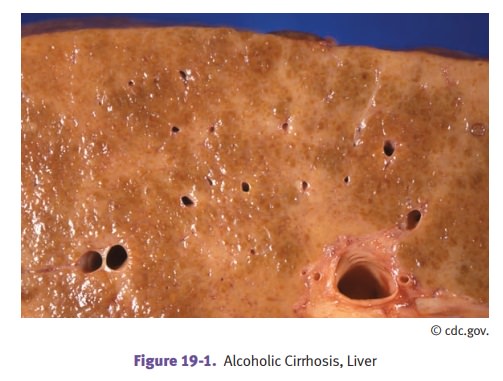Chapter: Pathology: Liver Pathology
Alcoholic Liver Disease
ALCOHOLIC LIVER DISEASE
Fatty change (steatosis) is
reversible with abstinence. The gross appearance is of an enlarged, yellow,
greasy liver. Microscopically, the liver initially shows centrilobular
macrovesicular steatosis (reversible) that can eventually progress to fibrosis
around the central vein (irreversible).
Alcoholic hepatitis is an
acute illness that usually follows a heavy drinking binge. Some patients have
no symptoms and others develop RUQ pain, hepatomegaly, jaun-dice, malaise,
anorexia, or even fulminant liver failure.
Microscopically, the liver
shows hepatocyte swelling (ballooning) and necrosis, Mallory bodies
(cytokeratin intermediate filaments), neutrophils, fatty change, and eventual
fibrosis around the central vein. The prognosis can be poor, since each episode
has a 20% risk of death, and repeated episodes increase the risk of develop-ing
cirrhosis.
Alcoholic cirrhosis develops
in 15% of alcoholics, and is typically a micronodular or Laennec cirrhosis.

Related Topics